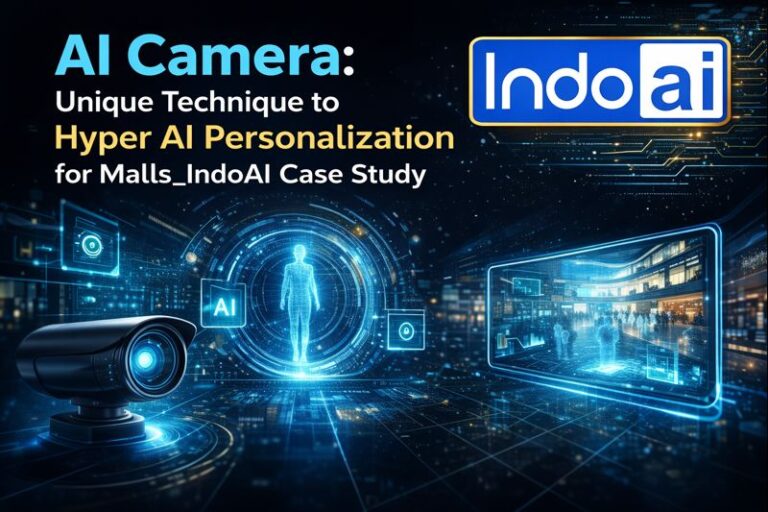
Introduction
IndoAI vehicle number plate detection technology offers a compelling answer: sophisticated computer‑vision algorithms deployed directly on smart cameras, eliminating latency, reducing bandwidth demands, and safeguarding sensitive video data.
In a time of increasing urbanization and vehicular traffic patterns, the need for reliable, real‑time vehicle identification systems has never been more critical. Law enforcement agencies, parking operators, toll plazas, and smart city planners require accurate, fast, and privacy‑preserving methods to observe vehicle flows, enforce compliance, and maximize infrastructure use.
The Imperative for Real‑Time Plate Recognition
Traditional automatic number-plate recognition (ANPR) systems typically use central servers for processing the video streams sent by the roadside or parking facility cameras. Although useful in controlled environments, this architecture has:
- Latency: Transmitting full‑resolution video to the cloud and waiting for a response can introduce delays of several seconds—too slow for fast‑moving traffic lanes.
- Network Constraints: High‑volume video streams consume significant bandwidth and require reliable connectivity, which may not be available at remote toll booths or city outskirts.
- Privacy and Compliance: Continuous streaming of sensitive CCTV footage to off‑site servers raises privacy concerns and may conflict with data‑protection regulations.
In contrast, IndoAI’s edge‑AI methodology processes video on the camera device, providing an instantaneous result and sending only the metadata—vehicle plate numbers, timestamps, and confidence scores. This design removes network bottlenecks and limits raw video exposure, while delivering responses in under 100 milliseconds.
Core Components of the IndoAI Plate‑Detection System
1. High‑Resolution Edge‑AI Cameras
IndoAI’s camera lineup includes Core, Edge, and Pro models, all capable of running multiple AI models. Each device features:
- 4K Video Sensor: Captures fine details such as small or tilted plates, even from moving vehicles.
- Onboard GPU/TPU Acceleration: Enables real‑time execution of deep‑learning models at high frame rates.
- Containerized Model Deployment: “Appization” allows administrators to install, update, or replace the plate‑detection model on demand, without hardware changes.
2. Specialized Number‑Plate Recognition Model
The recognition pipeline consists of two stages:
- Plate Localization: An object-detection network recognizes the region of interest of the frame—the areas that are home to license plates. The system scans frame portions efficiently to handle various plate sizes, angles, and lighting conditions. This model eliminates any irrelevant objects.
- Optical Character Recognition (OCR): A lightweight text-recognition neural network translates alphanumeric characters from the identified plate. The model achieves higher accuracy by using context-aware decoding, which takes advantage of known plate-format patterns (such as state codes and digit lengths) to amend misreads.
3. Multi‑Frame Voting and Confidence Scoring
To reduce false positives and improve reliability, IndoAI’s software aggregates predictions over several consecutive frames:
- Detection Consistency: A potential plate must be detected in at least three consecutive frames before being reported.
- Majority‑Vote Decoding: The OCR outputs from each frame are compared; the most frequent character sequence is selected as the final plate number.
- Confidence Thresholding: Only detections exceeding a configurable confidence score (e.g., 0.85) are passed to downstream systems.
Edge Processing and Data Flow
By performing inference on the device, IndoAI minimizes data transmission while ensuring instant alerts:
- On‑Device Inference: Each camera processes video frames in real time, running the localization and OCR models at over 30 FPS.
- Metadata Transmission: Detected plate numbers, along with timestamps, GPS coordinates (if available), and confidence metrics, are sent to a central server or cloud dashboard.
- Optional Clip Upload: Administrators may configure short video snippets (2–3 seconds) around detection events for review or audit purposes. These are compressed and encrypted before transmission, preserving privacy and security.
Deployment Scenarios
Toll Plazas and Highway Monitoring
At high-speed toll roads, speed and accuracy of plate recognition is critical when coming up with seamless pay-by-plate systems. IndoAI cameras installed at each rate lane can accurately capture and read plates at speeds of 120 km/h and faster. Detection under 100 ms enables instant transaction checks, easing congestion and reducing vehicle buildup at toll lanes.
Secure Parking and Access Control
Plate detection automates access points, making it useful for gated communities, corporate campuses and airports. When a vehicle is pre-registered, the system automatically opens the access point. It instantly triggers alerts for unauthorized or blacklisted vehicles, enabling swift follow-up. This reduces staffing costs, boosts security, and keeps visitor movement smooth and uninterrupted.
Urban Traffic Enforcement
Real-time plate data integrates with enforcement systems, enabling fast penalty issuance and deterring further traffic violations.
Logistics Yards and Industrial Sites
Large logistics depots and manufacturing plants handle hundreds of vehicle movements every day. IndoAI plate detection simplifies entry and exit logging, checks driver credentials, and keeps precise time-stamped records for asset tracking and security audits.
Performance and Accuracy
Field tests in diverse environments—daylight, low-light, rain, and glare—have demonstrated:
- Localization Accuracy: Over 99 % of plates correctly localized within the camera’s field of view.
- OCR Accuracy: Greater than 99 % character‑level accuracy, boosted by context‑aware decoding.
- Latency: Average time from frame capture to detection report under 100 ms.
- False‑Positive Rate: Below 1 % after multi‑frame voting.
Integration and Scalability
IndoAI supports seamless integration with existing enterprise systems:
- APIs and SDKs: RESTful APIs help in the fast ingestion of plate detection events into toll management software, parking-lot controllers, or municipal dashboards. SDKs in Python and Java allow for the custom development of analytics and reporting tools.
- Centralized Management: The cloud‑based portal offers one view of all deployed cameras, health‑monitoring alerts (online/offline status, model versions), and utilization statistics. An administrator can push model updates, or make configuration updates, to multiple devices in a single click.
- Role‑Based Access Control: Only approved users can access logs, tweak settings, or download clips—ensuring strong compliance with data-protection rules.
Privacy, Compliance, and Security
IndoAI’s solution complies with stringent privacy regulations, including India’s Personal Data Protection Act and the EU’s GDPR, given that video inference takes place locally and only plate metadata is sent. Key protections include:
- Encrypted Communications: All metadata and optional clips are encrypted in transit (TLS 1.3) and at rest (AES‑256).
- Data Retention Policies: Administrators define how long plate logs and video snippets are stored, with automatic purging options to minimize data footprints.
- Edge‑Only Option: For highly sensitive facilities, cameras can operate in “air‑gapped” mode—entirely offline—storing data locally on encrypted storage modules until manually retrieved.
These features ensure that organizations reap the benefits of intelligent plate recognition without exposing raw video streams or violating privacy norms.
Best Practices for Implementation
- Optimal Camera Placement: Position cameras at angles that minimize plate distortion and maximize coverage of vehicle lanes. Typical mounting height ranges from 2.5 to 3 meters, angled slightly downward.
- Lighting Considerations: Use built‑in IR illumination for nighttime operation; adjust exposure settings to prevent glare and overexposure on reflective plates.
- Model Calibration: For regions with unique plate formats (different fonts, character sets), work with IndoAI’s support team to fine‑tune the OCR decoder.
- Network Planning: While bandwidth requirements are minimal, ensure a stable network for metadata transmission and remote management. PoE (Power over Ethernet) simplifies installation by delivering power and data over a single cable.
- Continuous Monitoring: Leverage the central dashboard’s health metrics to detect camera failures or model degradation, and schedule routine updates to maintain peak performance.
Future Enhancements
IndoAI is actively developing advanced features to further strengthen its plate‑detection offering:
- Multi‑Country Plate Support: Expanding OCR models to recognize international plate templates and character sets.
- Deep‑Learning‑Driven Anti‑Spoofing: Incorporating texture and reflectance analysis to detect counterfeit plate overlays or digital screen spoofing.
- Integrated Vehicle Classification: Combining plate detection with multi‑class object recognition to log vehicle type (car, truck, motorcycle), enabling richer traffic analytics.
- Edge‑to‑Edge Mesh Networking: Allowing cameras to share detection metadata peer‑to‑peer for redundancy and faster local decision‑making in areas with intermittent connectivity.
These developments will position IndoAI for vehicle number plate detection at the forefront of intelligent transportation systems.
Conclusion
IndoAI’s edge-AI vehicle number plate detection is transforming the way agencies and businesses handle traffic, security, and infrastructure. IndoAI’s smart cameras use built-in vision models to deliver fast, accurate detection with strong privacy in under 100 ms.
“Across tolls, parking, and enforcement zones, this system enables instant insights and automation to enhance security and operations.
IndoAI’s on-device ANPR overcomes cloud limits and powers smart-city and industrial IoT with speed and precision.
From garages to city traffic, IndoAI’s secure platform scales easily to optimize and modernize your entire operation.



